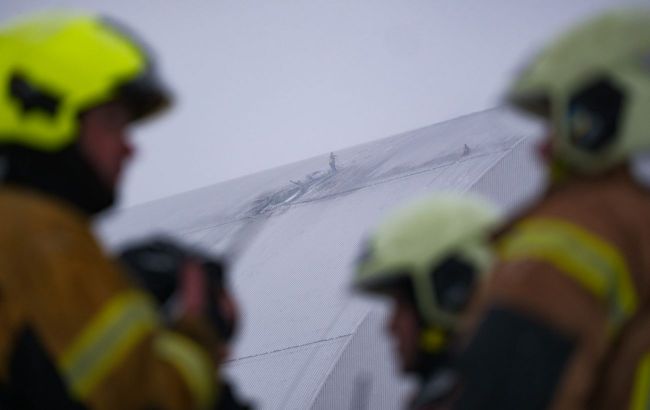IAEA inspects Chornobyl NPP after drone attack: Fire risks and radiation levels
 Photo: IAEA inspects Chornobyl NPP after drone attack on February 14
Photo: IAEA inspects Chornobyl NPP after drone attack on February 14
IAEA conducted an inspection at the Chornobyl Nuclear Power Plant following a Russian drone attack on February 14. Measurements revealed no radiation levels exceeding the norm, while efforts to extinguish the fires continue, according to a report from the organization and the State Agency of Ukraine on Exclusion Zone Management.
According to the document, the IAEA team working at the site was granted unrestricted access to the explosion area and conducted a thorough inspection to assess the damage to the New Safe Confinement (NSC), where the drone had struck and created a hole in the roof of the large arch structure designed to prevent any radioactive release from the damaged reactor and protect it from external threats.
"This was clearly a very serious incident, with a drone hitting and damaging a large protective structure at a major nuclear site," stated IAEA Director General Rafael Grossi.
Consequences of the drone attack on Chornobyl
The IAEA team members noted that a significant area was affected by the drone strike and subsequent fire. The team confirmed that both the external and internal cladding of the NSC arch had been pierced, creating a hole about six meters in diameter, and damaging some equipment and electrical cables.
"However, the structural support beams did not appear to have suffered major damage," the IAEA experts concluded.
Radiation levels
Despite the significant damage caused by the drone strike, the IAEA team was informed that the radiation levels at the site had not changed.
"This was also confirmed by the team’s own measurements which showed normal dose rate values near the NSC compared to those that the IAEA has recorded since it established a continuous presence at the site just over two years ago," the document states.
Firefighting efforts continue
According to the State Agency of Ukraine on Exclusion Zone Management on February 15, firefighting efforts continue to extinguish the fire affecting the outer cladding of the NSC arch.
"Three hoses are being used to extinguish the fire at a height of 87 meters, followed by the wetting of insulation and membranes. Work is also being carried out by rope access specialists to partially open the NSC arch structures and fill voids under the building's roof with fire-retardant materials," the report states.
Twenty units of equipment and 84 State Emergency Service (SES) personnel are involved.
The IAEA report also clarifies that the ongoing firefighting and efforts to prevent the spread of the remaining fires, which were likely caused by flammable materials in the roof cladding, delayed the start of repair work on the NSC that was completed in 2019 on the sarcophagus built nearly four decades ago, right after the accident.
The IAEA team was also shown some drone debris left at the site, including parts of the wings. The damaged drone was retrieved by Ukrainian specialists and taken for further analysis.
The team was informed that additional sensors will be installed to measure dose rate and aerosol concentration near the drone's impact zone.
"However, this task cannot be carried out until the remaining fires are totally eliminated to avoid damage to the sensors," the experts concluded.
Russian drone attack on Chornobyl's sarcophagus
On February 14, Russia attacked the Chornobyl Nuclear Power Plant (ChNPP) with a strike drone.
The drone was equipped with a high-explosive warhead and was flying at a height of 85 meters, making it undetectable by radar.
As RBC-Ukraine later reported, the drone attack on the Chornobyl Nuclear Power Plant could have resulted in a radiation accident. For that to happen, the drone would have needed to strike about 15 meters to the side.
Additionally, the possibility of a radioactive leak at the ChNPP was not ruled out.

